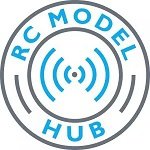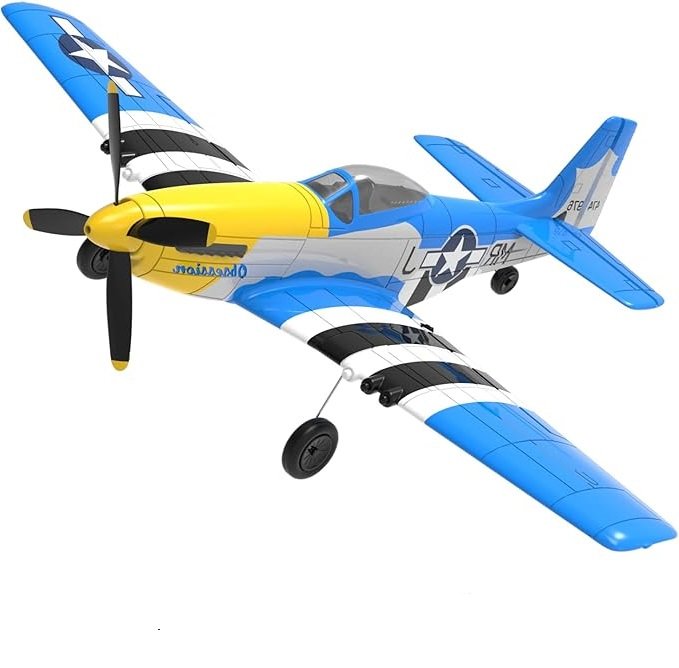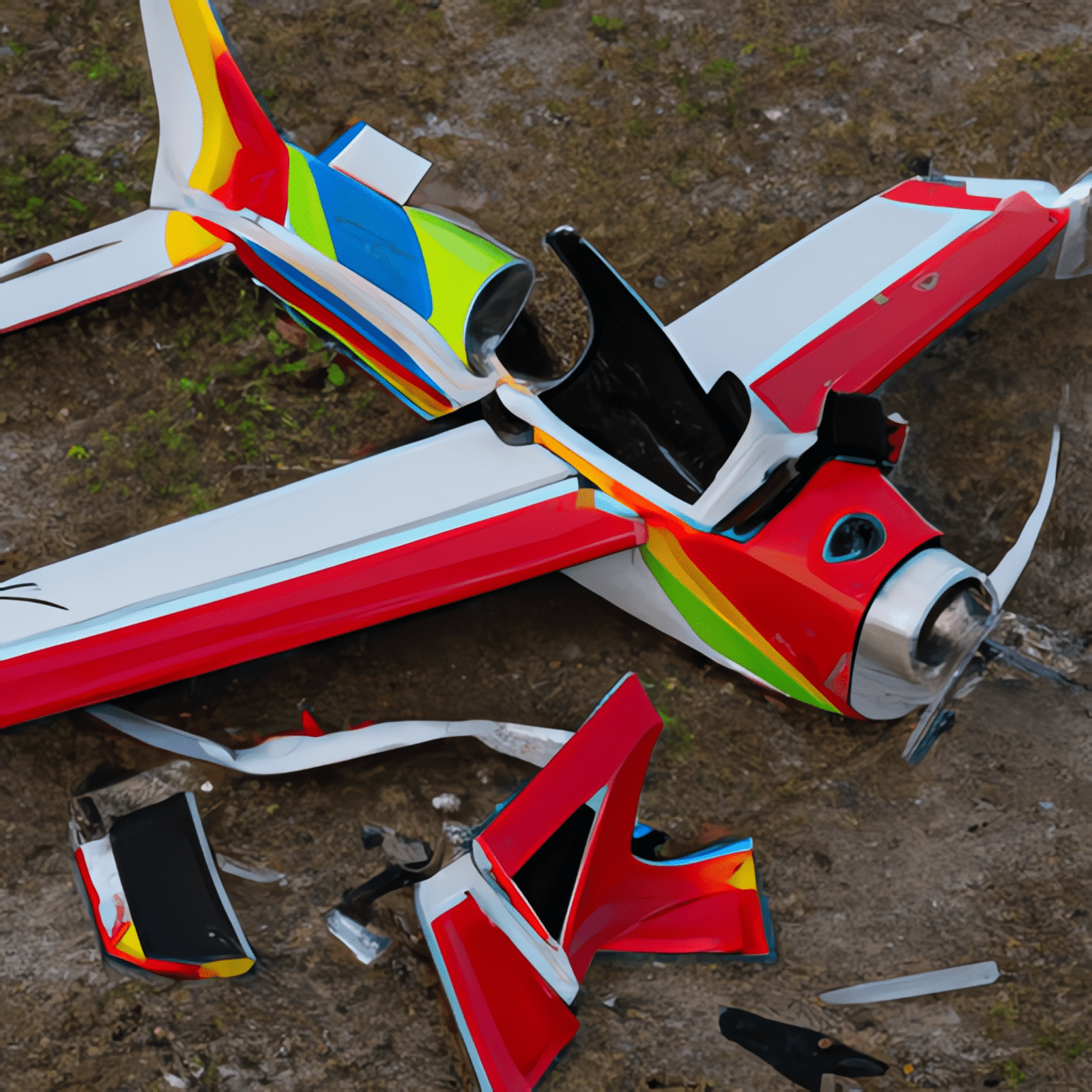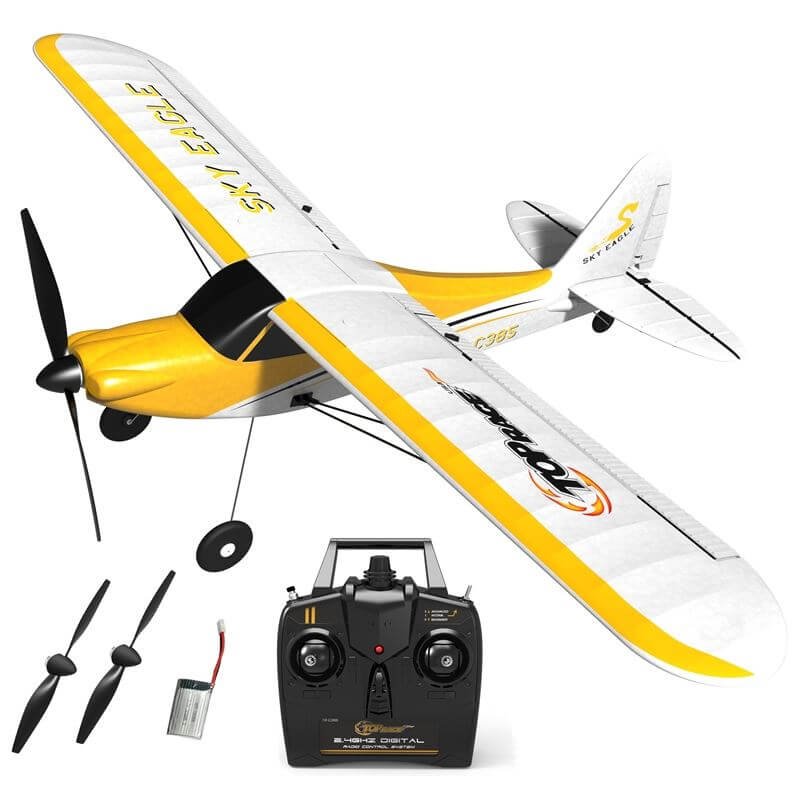Any links on this page that lead to products on Amazon, the Ebay Partner Network (EPN) and other companies may be affiliate links and we earn a commission if you make a qualifying purchase. Thanks in advance for your support!
If you’ve never tried to fly a remote control plane, then you may wonder if “Are RC Planes Hard to Fly?”
A Remote-control plane is not difficult to fly when you know how it works, devote practice to learning, and keep safety in mind.
You’re about to find out how easy flying RC planes can be with the right information. We’ll go over the basics of how to control an RC plane as well as a few tips and information a beginner should keep in mind. By the end, you’ll have enough information to enjoy the hobby without the stress.
How Do I Control an RC Plane?
There are a number of basic elements that contribute to controlling a plane model.
- The Model’s Control Surfaces – The plane has three control surfaces; the movement of the air over these surfaces gives you control over the plane model’s flight. These are the rudder (the vertical piece on the tail of the plane) the elevator (the smaller wings on the tail) and the ailerons (the moving back segments of the plane’s main wings.)
- The Transmitter Controls – These controls usually have two sticks: left and right. The left controls the throttle (speed) front-to-back, and the rudder or steering left-to-right. The right stick controls the elevator front-to-back, and the ailerons left-to-right. With 3 channel models, you will be able to control the throttle, the rudder, and the elevators. A 4-channel plane will, in addition, have an aileron control.
- Wind Direction – Be mindful of the wind direction and its strength. Ideally, on take-off and landing, you should be heading into the wind. This creates more airflow over the control surfaces, allowing you more control over the plane overall. Remember not to fly in wind that is over 8 miles per hour for the best results. Check out this article here.
Take Off, Cruising and Landing
To get an RC plane in the air successfully, you’ll have to know the best practices for takeoff. Bear in mind that although this process is pretty easy with a bit of practice, you do have to get the hang of it.
For take-off, your RC plane should be placed on a flat surface with plenty of open space in front of it, and its nose pointed into the wind. Next, apply the full throttle (remember, pushing the left stick forward.)
All you need to do is maintain the pitch of the plane; make sure the nose does not dip down or up at any extreme by adjusting the right stick forward and backward.
Your RC airplane can then cruise at a safe altitude in level flight, for a beginner’s model this is usually around a range between 45 to 55 miles per hour. When your RC plane reaches an altitude of around 125 feet, you’ll need to turn it back toward you. If you fly it too far away from you, there is a danger you will lose control.
In fact, flying the plane will look like steering it in gradual circles from this point on. To turn the RC plane, you’ll need to move two control surfaces in gradual alternation: the ailerons and the elevator.
First, apply the left aileron (or the right, if you prefer to go counter-clockwise) by moving the right stick to the left or the right. Next, you’ll need to gradually tip the elevator by moving the right stick back – this should keep the nose up. The plane should turn in a radius that’s either large or small depending on how far you push the elevator with the right stick.
Keep in mind that while all of this is going on, you’ll need to use the left stick to increase the throttle. When you’re done cruising, it’s time to land.
First off, you’re going to try to land with the plane’s nose to the wind again. Next, you’ll pull back on the right stick and pull back on the left stick ever so gradually at the same time. If you pull back too quickly, the plane will stall and probably crash.
As the plane gets close to the ground, pull the right stick back very sharply, then forth again more slowly, so that the plane’s nose tips abruptly up. This is called “flaring” the nose. It will allow your plane to slow down as it hits the runway.
Once the wheels have made contact, all that’s left is for the pilot to carefully keep the rudder even, and the throttle off, until it slows to a stop. That’s all there is to it!
Auto-Stabilization Software (SAFE)
One thing that might be well worth investing in for a beginner to this hobby is an auto-stabilization software known as “SAFE.” This stands for “Sensor Assisted Flight Envelope.”
These sensors can basically make the software of the RC plane aware of how close it is to the ground. Then, the user can program the software so that the pilot can choose how much help they’ll need to fly the plane.
If necessary, SAFE can limit the pitch and roll of the plane and stabilize it so that the pilot has an easier time controlling the plane. This is especially helpful for beginners getting comfortable with the controls of the RC plane.
Learning Curve for Beginner Pilots
There is a definite learning curve for beginner pilots. The first step is successfully launching the RC plane: This can be accomplished in as little as an hour of practice, but as you can see above, cruising, turning, and landing will still have to be mastered.
Everyone learns at a different pace, but with regular practice (at least an hour using the controls of the plane once every two days) many find that they can slowly gain complete control over their RC plane in about 3 months.
A trainees pilot can accelerate their progress by attending flight school – in practice, this usually means joining a local model flying club and “buddying” with an experienced pilot. This is likely to involve a buddy box, where the instructor pairs a transmitter with the trainee’s own transmitter so that control can pass between them if the trainee gets into trouble.
Tips For Beginner RC Pilots
Below are some quick tips to help you become a master RC pilot if you’re just starting out.
- Use a cheaper model to practice. You’ll wind up crashing your plane as you work on mastering piloting skills; focus on purchasing a model with agility, but low mass and high durability in materials.
- Plan on crashing. Don’t let yourself get discouraged each time your RC plane makes a less-than-pretty landing. The beauty of learning RC planes as a hobby is that you tend to learn something even when you crash!
- Practice landing most often. Landing is actually one of the harder skills to master and one of the most important. You’ll get better and better at seeing when to “flare” the nose of the plane, and to keep above the plane’s stall speed.
- Try different models. Once you get the hang of your first, cheapest model, you can move on to others and learn new skills. This can keep our interest in the hobby fresh and round out your skill level.
Flight Training and Practice Requirements
You may be wondering if flying your RC plane out in the backyard is the best way to practice. Actually, there are several ways to learn this skill!
This hobby is so popular that you can actually find an RC airplane club with a certified instructor to teach you. Sometimes, you can even learn from these before you own your own airplane, often borrowing a “club” plane.
You can also opt for an RC flight simulator, which is a computer program that can teach you to use the remote with a digital plane instead of a real one.
Finally, you can absolutely teach yourself to fly an RC plane. However, you do have some requirements you need to keep in mind when practicing.
For example, if you go to a public space, be aware that many have restrictions against remote-controlled planes. The biggest thing to watch out for is that some planes are louder than others, and the officials normally only allow quieter, electric models to avoid creating a disturbance.
Additionally, you need plenty of space. Anywhere where there are people in a public area should not be your go-to for practice flights; you run the risk of injuring someone if you lose control of the plane.
Practice, Practice, Practice!
Finally, it’s important to practice, practice, practice! Repetition is the only way to improve, but it won’t necessarily take hours of practice. However, remember that you’ll have to repeat good habits, and not bad ones, to get the most out of your practice.
Remember to start turning the plane after achieving level flight at around 125 feet of altitude (which will, initially, be difficult to judge, but you’ll soon get the hang of a safe flying height), and make gradual adjustments with your sticks.
Don’t get into the habit of jerking the controls, and spend as much time as possible developing an eye for when to “flare” your plane’s nose during landing.
After the first successful flight, you’ll gain confidence to try other maneuvers.
Pre-Flight Checks for Safety
- Be aware of the weather and especially the wind. Don’t fly if you have any doubts.
- Check the Battery life of the RC plane; make sure it is fully charged.
- Make sure all hinges, links, and control horns on each control surface are in place.
- Test the sticks to make sure your control surfaces are responding correctly to the remote.
- Make sure all antenna wires and the receiver of the aircraft are properly in place.
- Check the mounting of the motor, and tighten the propellor so that it spins freely.
- Check the wings for any problems in the mounting, as well as cracks or other signs of wear and tear.
- Check the fuselage for similar signs of wear and tear.
- Balance the plane on one finger at the indicated center of balance. If it tips toward the battery or tail, move the mounting of the battery to return it to balance.
Remember to Register Your RC Plane
Register your RC plane with the FAA (the CAA in the UK, and Transport Canada in Canada) in order to comply with their rules. You’ll need to send in your physical address, your phone number, your email address, the model and make of the plane, the remote ID serial number, and money to pay for the registration.
Usually, any plane that weighs less than 55 pounds will be $5 to register for three years, and it only counts for that specific plane.
Remember, you need to be at least 13 years old or older and be a legal United States citizen to register the plane. For heavyweight RC planes, you can register online at FAA Drone Zone.
For the CAA and TC rules, check out this article here.
The Right Kind of RC Plane for Beginners
The best radio-controlled planes for beginners will be easy to operate, but durable enough to handle the necessary hard knocks in practice.
We’ve looked at the best trainers for beginners in this article.
Remember, the best choices for beginner planes are durable, easy to set up, and yet not too expensive considering all the hard knocks they’re in for!
Find the Right Flying Area
You are allowed to fly your RC plane in your backyard, but often, you’ll need more space and want fewer of your neighbor’s belongings in the way. As mentioned above, you can fly your plane in a public space as long as it is registered and doesn’t make too much noise.
Be aware of commercial aircraft flight paths, and “no-fly” zones.
Avoid trespassing on private land, and even flying near private land, as you may need to recover the model if it strays and crashes.
The best option is to find a field dedicated to flying RC models, such as your local flying club.
Do I Need Insurance to Fly My Model Plane?
It would be very wise to get third-party insurance for your RC model, to cover property damage or injuries to the public. More about this over at this article, here, but check the national RC airplane club for your country, which may have automatic insurance that covers members.
Mishaps Do Happen!
Everybody makes mistakes, and everyone deserves time to make those mistakes when they’re learning a fun but challenging hobby like RC plane piloting. Don’t let yourself get discouraged if you crash.
Remember, this is only a hobby; it’s meant to be fun. Expect some failures and setbacks, and instead of being afraid of crashing, focus on the excitement of trying something new.
Safety and Legal Advice for RC Plane Pilots
The first safety tip you should bear in mind when it comes to flying RC planes is to go through your thorough your pre-flight checks, located above, every time you fly. The second piece of advice you’ll need is to maintain awareness of your surroundings. This includes other pilots, poor weather conditions, and distractions in general.
Flying near power lines, buildings, or very densely crowded parks and neighborhoods is a bad idea. You should always make sure that your plane is adhering to the local regulations for the most hassle-free results.
In addition to registering your plane, make yourself aware of your town’s laws when it comes to noise. Some may even have listed flight times for RC pilots if the hobby is popular enough in your location.
In Conclusion: Remember, It’s Just a Hobby!
To sum it all up, it’s important to remember that flying RC planes is just a hobby! The best way to get the proper amount of joy out of your RC plane is to keep that in mind. This way, no matter how many crashes you witness or how many safety tips there are to remember, you’ll find it’s all worthwhile for the fun you can have.
Meta Description
Wondering if model plane flying is for you? Discover the answer to the question: Are RC Planes Hard to Fly?




